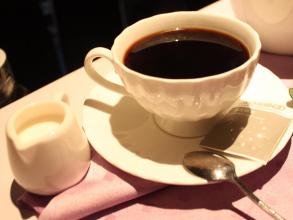Introduction to the characteristics of Coffee Flavor varieties in Saint Roman Manor, Costa Rica
The topography of Costa Rica is that the coast is surrounded by plains, while the middle is cut off by rugged mountains. The country declared 200 nautical miles in its exclusive economic zone and 12 nautical miles in its territorial sea. The climate belongs to the tropics and subtropics, and part of the neo-tropical Costa Rica has completely different climatic conditions, completely subverting the classification of the four seasons of the year. There are only two seasons, the rainy season from April to December, and the dry season from the end of December to April of the following year, also known as summer. The annual average temperature in San Jose, the capital, ranges from 15 ℃ to 26 ℃; the temperature in the coastal areas is relatively high, with a night average temperature of 21 ℃ in the Caribbean and a daily average temperature of 30 ℃. Oil is completely dependent on imports, mainly from Colombia and other countries, and is monopolized by the National Oil Company (RECOPE), with an average annual import of 3 million tons of crude oil. Since 2012, the national oil company has suspended crude oil refining production due to aging facilities, and all fuel oil has been imported instead. In 2013, Costa Rica imported 19.3 million barrels of oil, accounting for US $2.3 billion, accounting for 5.5 per cent of GDP. Costa Rica accounts for only 0.03 per cent of the world's land area, but has nearly 4 per cent of the world's species. is one of the countries with the richest biological species in the world. 26% of the land area is a national park or nature reserve, including 11 wetlands, 2 biological reserves and 3 World Natural Heritage sites. The national forest coverage rate is 52%. It is called the Legislative Assembly, the unicameral system, the Barber Congress, the exercise of legislative power and other important functions and powers. Major government decisions need to be examined and approved by the Legislative Assembly, which is called the "first power" of the country. It is the highest legislature in the country and consists of 57 members. Members are directly elected by voters for a term of four years and are non-re-elected. The current Legislative Assembly was formed in May 2010. the new Legislative Assembly was elected on February 2, 2014. the election results are as follows: 18 seats for the ruling National Liberation Party (PLN), 12 seats for the Civic Action Party (RAC), 4 seats for the Free Movement Party (PML), 8 seats for the Christian Social Solidarity Party (PUSC), and 1 seat for all the people to join the Party (PASE). Broad Front Party (FA) 8 seats, National Reform Party (RN) 1 seat, Costa Rican Reform Party (RC) 1 seat, Christian Democratic Union (ADC) 1 seat and 2 independent parliamentarians. The current chairman is Luis Fernando Mendoza Fernando Mendoza Jimenez of the National Liberation Party, who was elected in May 2013 for an one-year term. On May 1, 2014, the Legislative Assembly completed its new session.
Coffee was introduced into Costa Rica from Cuba in 1729. Today, its coffee industry is one of the well-organized industries in the world, with a yield of 1700 kg per hectare. Costa Rica has only 3.5 million people but 400m coffee trees, and coffee exports account for 25 per cent of the country's total exports. Costa Rica's volcanic soil is very fertile and well drained, especially in the central plateau CentralPlateau, where the soil consists of successive layers of ash and dust. Costa Rica was therefore the first country in Central America to grow coffee and bananas for commercial value. Coffee and bananas are the country's main exports.
The research center, located about 30 kilometers northeast of San Jose, the capital of Costa Rica, belongs to the Costa Rican Coffee Association and is a national coffee species in Costa Rica.
The newly developed villa sarchi planting, breeding and quality inspection research institutions, in addition, it also has 10 hectares of experimental plots, planting a number of excellent varieties. Coffee is Costa Rica's main agricultural product, with an annual output of more than 2 million bags (60 kilograms) and foreign exchange earnings of 250 million US dollars, second only to pineapples and bananas.
All the coffee trees planted in Costa Rica are Arabica coffee trees. through improvement, the quality of coffee beans is better and more stable. in order to facilitate picking, coffee trees are kept at a height of about 2 meters through continuous pruning. The coffee that people eat is the taste of the seeds in the fruit that are brewed in water. After picking raw coffee beans, the seeds (that is, coffee beans) can be roasted only by peeling, pulp, seed film and sun exposure. now part of the process can be replaced by machines, and the speed of coffee production increases a lot. However, there is no machine to do coffee picking. We must use artificial other kinds of Brazilian coffee, such as Rio, Parana, etc., which do not need too much care and can be produced in large quantities. Although the taste is relatively rough, it can be regarded as a kind of high-quality and inexpensive coffee, which has its own standard because it is distributed all over the country and its solid quality varies (NO.2~NO.8 according to the number of sundries, NO.13~NO.19 according to the size of beans, and six grades according to taste). Almost all Arabica varieties are of good quality and stable in price. The most famous one is Costa Rica, which has been a necessity of blended coffee and is familiar to the public since ancient times.
Excellent Costa Rican coffee is called "extra hard beans". This kind of coffee can grow above 1500 meters above sea level. Altitude has always been a problem for coffee growers. The higher the altitude, the better the coffee beans, not only because the higher altitude can increase the acidity of the coffee beans and thus increase the flavor, but also because the night temperature at the higher altitude is lower, which can make the trees grow slowly, thus the flavor of the coffee beans is stronger. In addition, due to the high altitude drop caused by sufficient rainfall, it is very beneficial to the growth of coffee trees. However, its negative effect is to increase additional transportation costs, which is likely to make coffee production unprofitable. The coffee industry in Costa Rica has adopted new technologies to increase efficiency, including using "electric eyes" to select beans and identify coffee beans of irregular size.

Important Notice :
前街咖啡 FrontStreet Coffee has moved to new addredd:
FrontStreet Coffee Address: 315,Donghua East Road,GuangZhou
Tel:020 38364473
- Prev

Introduction to the characteristics of coffee flavor and taste in Santa Rita Manor, Colombia
Washington lies between Maryland and Virginia. It used to be a shrubby land, with only a few cottages scattered. In 1789, the Confederate government was formally established, and George Washington was elected as the first president. When Congress held its first meeting in New York, there was a heated dispute over the location of the capital, and lawmakers from both sides wanted to locate the capital in their own territory. 1790
- Next

Flavor and taste of Panamanian coffee varieties in producing areas introduction to Esmeralda Manor Coffee
Panama is located in the isthmus of Panama in Central America, bordered by Colombia to the east, the Pacific Ocean to the south, the map of Panama to Costa Rica to the west and the Caribbean Sea to the north. The territory is S-shaped to connect North and South America, and the Panama Canal connects the Atlantic and Pacific oceans from north to south. It is known as the bridge of the world. [5] Panama has a land area of 75517 square kilometers.
Related
- Does Rose Summer choose Blue, Green or Red? Detailed explanation of Rose Summer Coffee plots and Classification in Panamanian Jade Manor
- What is the difference between the origin, producing area, processing plant, cooperative and manor of coffee beans?
- How fine does the espresso powder fit? how to grind the espresso?
- Sca coffee roasting degree color card coffee roasting degree 8 roasting color values what do you mean?
- The practice of lattes: how to make lattes at home
- Introduction to Indonesian Fine Coffee beans-- Java Coffee producing area of Indonesian Arabica Coffee
- How much will the flavor of light and medium roasted rose summer be expressed? What baking level is rose summer suitable for?
- Introduction to the characteristics of washing, sun-drying or wet-planing coffee commonly used in Mantenin, Indonesia
- Price characteristics of Arabica Coffee Bean Starbucks introduction to Manning Coffee Bean Taste producing area Variety Manor
- What is the authentic Yega flavor? What are the flavor characteristics of the really excellent Yejasuffi coffee beans?

